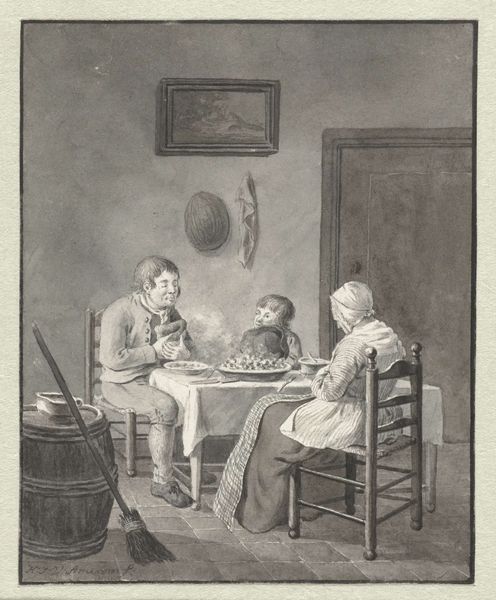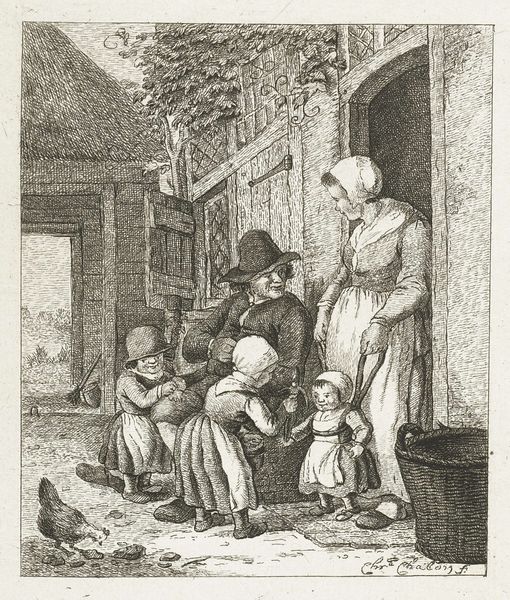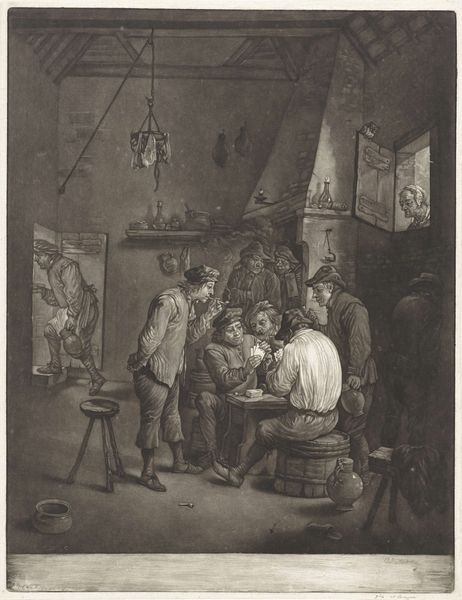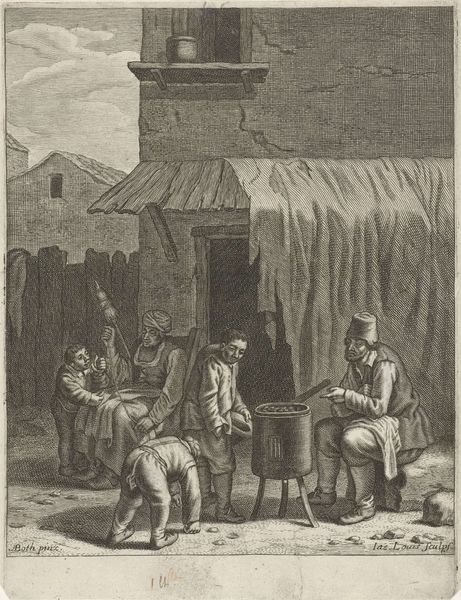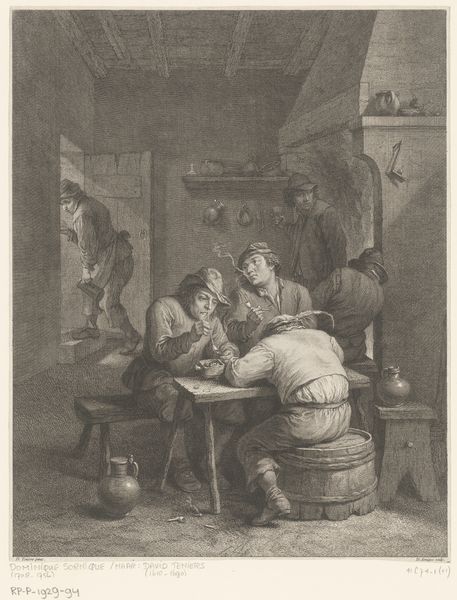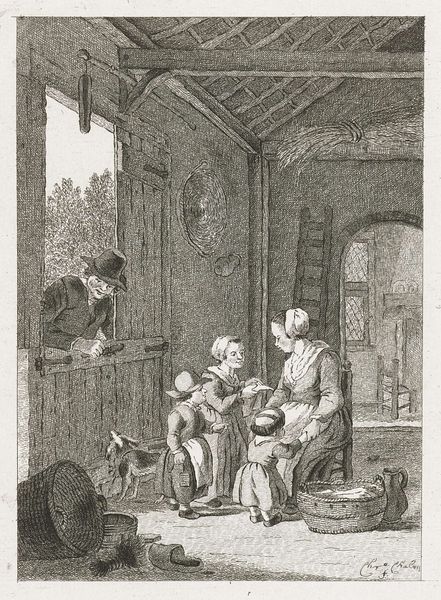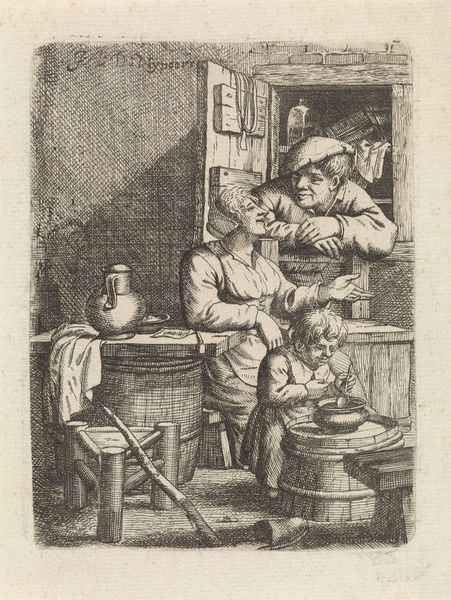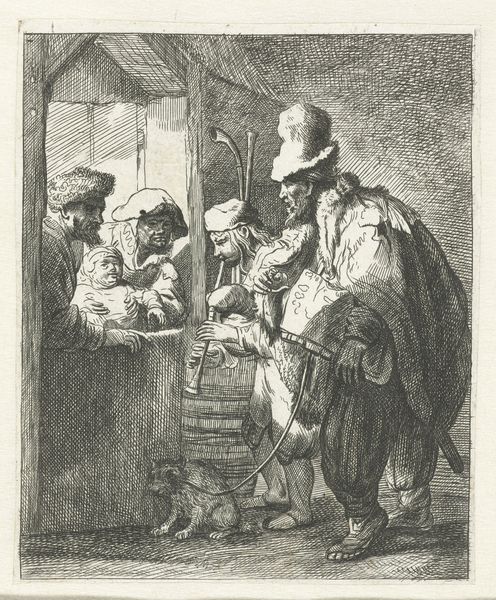
drawing, ink, pen
#
portrait
#
drawing
#
narrative-art
#
dutch-golden-age
#
neoclassicism
#
caricature
#
ink
#
pen
#
genre-painting
Dimensions: height 125 mm, width 102 mm
Copyright: Rijks Museum: Open Domain
Curator: Let’s spend a moment reflecting on this pen and ink drawing by Hendrik Jan van Amerom, entitled “A Mother Cuts Bread for Her Husband and Son,” created sometime between 1786 and 1833. Editor: There's an undeniable feeling of austerity conveyed through this domestic scene. The limited palette seems to emphasize the stoicism on each of their faces. Curator: Van Amerom places us within the intimate setting of a Dutch home. But considering that period and its artistic conventions, I wonder about the potential social commentary—gender roles perhaps, or expectations around labor and domesticity—are brought to bear through its realism. Editor: I see the prominence of clogs, not only worn but clearly announcing their presence—those echoing wooden soles! This draws my attention towards a specific aspect of daily life elevated by this overt visual symbol, maybe a connection to a simple, grounded past. The three plates above the mantle – empty yet symbolically suggestive, like talismans representing hearth and home. Curator: It’s interesting you mention those clogs, their imposing nature makes me question how the family are rooted into class identity and performative roles expected in such contexts, more importantly, what opportunities where available for the members of the working class, particularly, women. I see the muted tonality not only as artistic but a reflection of a society’s limited color palatte. Editor: Yet consider the hanging lantern—the hope that life will burn on! Isn't there something uplifting suggested? In the end, it shows us people within the history and material that make and ground them. It allows one to consider life at that moment, where it was going and where its culture was leading it to. Curator: The artist allows us a glimpse of lives often relegated to the background and invites dialogue beyond surface impressions. It becomes imperative that one can now have a better consideration of contemporary art as an extension of works like Van Amerom’s: what were the conditions that led it to this, how can one then engage with the new art from the knowledge built up when engaging with the old. Editor: Indeed. Thank you for calling our attention to that dialogue! It truly enhances my interpretation of visual signs and how cultural values persist in unexpected forms.
Comments
No comments
Be the first to comment and join the conversation on the ultimate creative platform.
